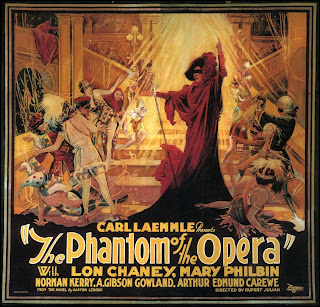Werth: It was busy. I single-handedly re-vamped the FBI, shot a film with Laurence Olivier, and this weekend I become the first female Prime Minister of England!
Wise: It sounds like someone's been catching up on the bio-pics of 2011.
Werth: It's a bumper-crop of bio-pics this Oscar season with Leonardo DiCaprio as J. Edgar Hoover in J. Edgar, Michelle Williams as Marilyn Monroe in My Week with Marilyn, and Meryl Streep as Margaret Thatcher in The Iron Lady.
Wise: All three should compete in the Best Actress category.
Werth: Hollywood loves movies about famous people, and why not? Their stories are full of inspiration, real-life challenges, and strange accents—roles that actors and actresses love to sink their teeth into. And no one takes a juicier bite of history than George C. Scott in director Franklin J. Schaffner's Patton (1970).
Wise: From Maggie Thatcher to Old Blood and Guts. Is the testosterone increasing or decreasing?
Werth: Patton is a bio-pic tailor-made for the man in all of us. Chronicling the WWII African and European campaigns of General George S. Patton, the film is an action-packed smorgasbord with well-choreographed battle scenes that thrill, but also remind us of the horror and indignity of war. The scope of the filming is epic with wide camera vistas, rousing score (by Oscar Goldsmith), and a three-hour running time complete with intermission.
Wise: Let's go out to the lobby, indeed.
Werth: But eclipsing all of that is Scott. His portrayal of Patton is so expertly transcendent that he even towers over the invasion of Sicily. Patton was a brilliant hardass who rallied his troops to do impossible feats in the midst of impossible circumstances. Scott stomps around with his riding crop and boots, spouting French and theories on reincarnation, scowling with a jaw of granite one moment then breaking into a cocky grin the next, making us willingly fall in line—even if we think he's a Napoleonic blowhard.
The iconic opening scene in front of an immense American flag perfectly encapsulates Scott's ability to horrify and charm his audience with a performance that defines the power of conviction. Scott doesn't make Patton human as much as he makes his legend real. And the film feels amazingly fresh in the context of our current wars and questions about the nature of patriotism. Patton won seven Oscars including best Director and Best Picture, but Scott refused to accept his statuette because he didn't feel actors should be in competition with each other. It's probably not a stance that the medal-loving George S. would have taken.
Wise: Although Elizabeth (1998) purports to be a biography of the most famous queen of England, it's really more of an historical fever-dream about the early reign of Queen Elizabeth I (Cate Blanchett). Director Shekhar Kapur began his career making Bollywood flicks and that frenzied, colorful style definitely influenced this film, transforming the traditionally staid British historical drama into something exotic. The film also catapulted Australian actor Blanchett to international stardom and provided a delightful bit of irony in having a native of a former colony playing The Virgin Queen.
Werth: Coincidentally, a role I often played when I first moved to New York.
Wise: Blanchett is terrific in the role. Bio-pics are uniformly about Overcoming Adversity and Achieving Success Despite the Odds, but Blanchett invests her performance with an amazing amount of subtlety despite all the drama swirling around her. Plus, she easily withstands the scenery-chewing supporting turns from the likes of Geoffrey Rush, Sir John Gielgud and Richard Attenborough. She is even able to overcome the elaborate period costumes which have swallowed up many a lesser actress.
Werth: I want a poisoned dress...
Wise: Quibblers can pick out the inaccuracies of the film, but in movies like these, slavish respect to the past is beside the point. They're all about big gestures, big set pieces and big emotions, but it's the truly good ones that transform all the pageantry into something real.
Werth: All this talk about 'big' makes me want to start work on a cheese dip for tomorrow night.
Wise: Tune in to next week's Film Gab to see how 'larger-than-life' we get. Happy New Year Everyone!



























































